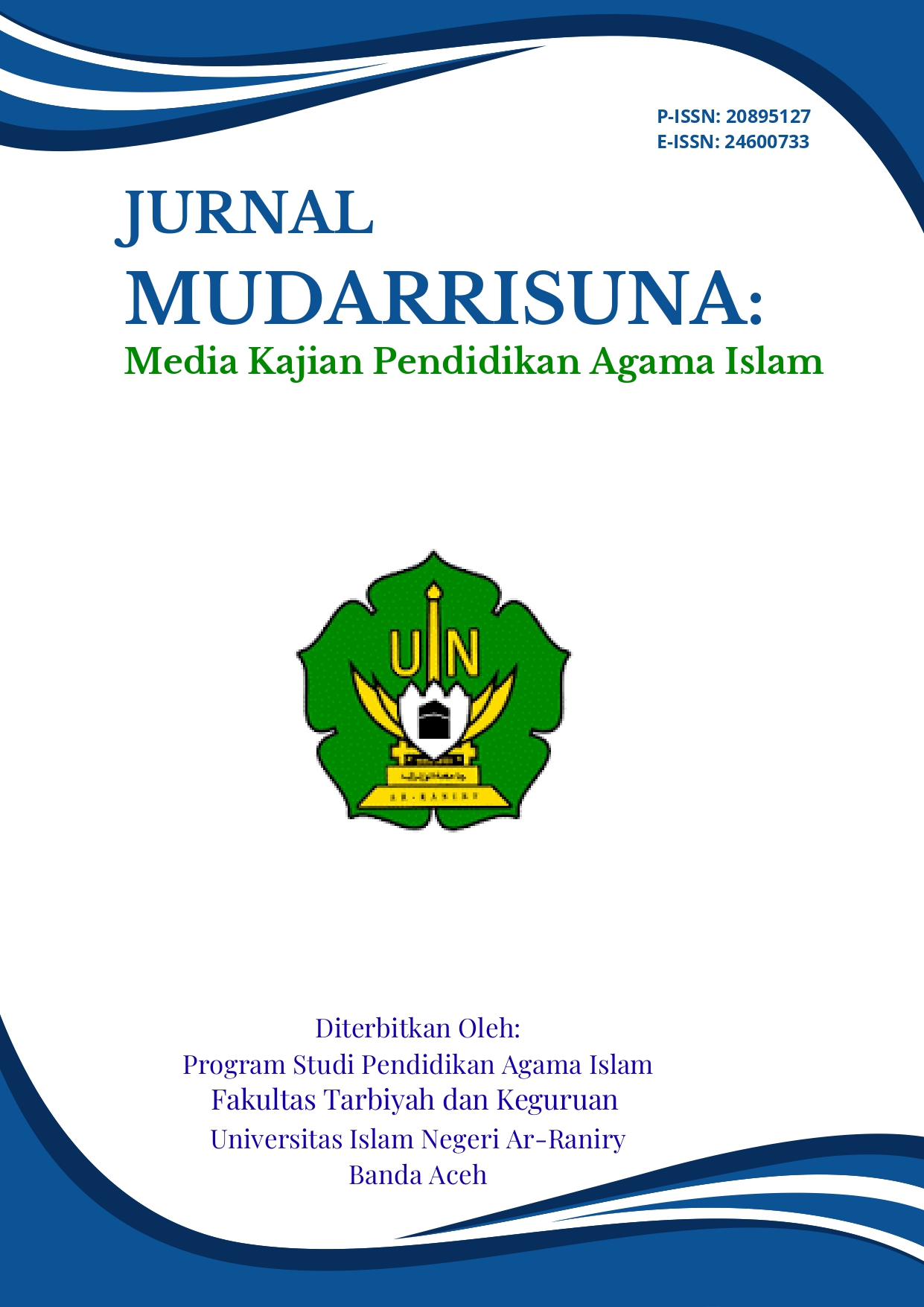IMPLEMENTASI MODEL PEMBELAJARAN COOPERATIVE LEARNING DALAM KURIKULUM MERDEKA PADA MATA PELAJARAN PAI DI SDN NAGASARI III KECAMATAN NAGASARI KABUPATEN KARAWANG
DOI:
https://doi.org/10.22373/bkz51n42Keywords:
Kooperativ Learnig, Pendidikan Agama Islam, Kurikulum MerdekaAbstract
This research aims to determine the effectiveness of the Cooperative Learning learning model when applied to Islamic Religious Education subjects in the Merdeka Curriculum in class IV at SDN Nagasari III Karawang. It started from the results and motivation of student learning before using the Cooperative Learning model to the results of implementing the model on class IV students at SDN Nagasari III Karawang. This is an effort to increase students' learning motivation in class in subjects considered boring and difficult to understand. It is not uncommon for students to appear silent and lazy to ask questions or respond to the material being explained by the subject teacher. Therefore, this motivates researchers to find out how learning in the Independent Curriculum in PAI Subjects is implemented with a cooperative learning model. Therefore, the researcher made observations with subject teachers and observed the implementation of the model in class IV at SDN Nagasari III Karawang. This research uses a descriptive qualitative approach with Class IV objects at SDN Nagasari III Karawang. Data collection techniques are carried out through observation, interviews, and documentation. The respondents in this research were the school principal and class IV PAI teacher as well as the students involved in this observation. The results of this research show that the application of the Cooperative Learning Model to PAI subjects in the Independent Curriculum consists of 3 activities, namely in learning activities there are preliminary activities, core activities, and closing activities. The problem in this learning process is the condition of placement in class IV which is next to the toilet and ablution area. So that many students pass by when permission is given from the teaching and learning activities and this causes students in class IV to become unfocused because they are distracted by the students passing in front of the class. Based on the results of implementing this model, female students are more distracted in teaching and learning activities and get higher grades than before implementing this learning model. This is because students feel more happy in class with the learning process using this model so that students can be more focused and active in learning.
Downloads
Published
Issue
Section
License
Copyright (c) 2025 Erilla Renggina Brillianty, Athaya Hasna Salsabila, Eneng Lindawati, Ferianto Ferianto

This work is licensed under a Creative Commons Attribution-ShareAlike 4.0 International License.
Jurnal MUDARRISUNA: Media Kajian Pendidikan Agama Islam allows the author(s) to hold the copyright and to retain the publishing rights without restrictions. Authors who publish in this journal agree to the following terms:
- Authors retain copyright and grant the journal right of first publication with the work simultaneously licensed under a Creative Commons Attribution-ShareAlike 4.0 International License that allows others to share the work with an acknowledgment of the work's authorship and initial publication in this journal.
- Authors are able to enter into separate, additional contractual arrangements for the non-exclusive distribution of the journal's published version of the work (e.g., post it to an institutional repository or publish it in a book), with an acknowledgment of its initial publication in this journal.
- Authors are permitted and encouraged to post their work online (e.g., in institutional repositories or on their website) prior to and during the submission process, as it can lead to productive exchanges, as well as earlier and greater citation of published work.




